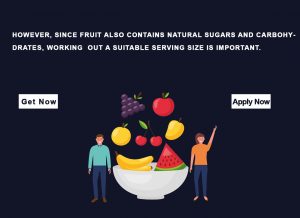Benefits | Research | Glycemic| index | Other fruit| Takeaway |
The basics
Watermelon is typically a summertime favorite. Before you devour a piece of this delicious dessert at every meal or turn it into your go-to summer snack, make sure to review the nutritional facts. If you have diabetes, you know how important it is to watch what you eat and monitor your blood sugar levels.
Watermelon does contain natural sugars. Depending on your overall diet and the amount of watermelon consumed, this may have an impact on your blood sugar level. Discover the potential effects of including watermelon in your diet by reading on.
The health benefits of watermelon
Watermelon, which is indigenous to West Africa, is a fantastic source of several vitamins and minerals, such as:
vitamin A
vitamin C
potassium
magnesium
vitamin B-6
fiber
iron
calcium
Vitamin A supports healthy vision and aids in the upkeep of your heart, kidneys, and lungs. Watermelon contains vitamin C, which is also advantageous for a balanced diet.
Vitamin C has been known to:
improve heart health
aid in the prevention of some cancers
help battle symptoms of the common cold
Because it’s high in fiber, eating watermelon can promote good digestive health.
 Consuming reasonable quantities of watermelon can help you feel fuller for longer by saying your sweet tooth. This is because watermelon is over 90 percent sourced. Watermelon can help you maintain your diet and manage your weight in addition to keeping you hydrated.
Consuming reasonable quantities of watermelon can help you feel fuller for longer by saying your sweet tooth. This is because watermelon is over 90 percent sourced. Watermelon can help you maintain your diet and manage your weight in addition to keeping you hydrated.
What the research says, There isn’t any evidence that directly links eating watermelon to controlling diabetes. Nevertheless, there is some data to support the idea that consuming watermelon may lower your chance of developing some diabetes-related problems.
The pigment that gives watermelon its color, lycopene, is present in moderate concentrations in the fruit. It’s also a powerful antioxidant.
Lycopene has the potential to lower your risk of cardiovascular disease, but further research is required.
Early research suggestsTrusted Source that the lycopene found in tomatoes may be linked to a reduced risk for heart disease. About 68 diabetics who are 65 years of age or older pass away from heart disease. Roughly 16 percent of people in this demographic die of stroke.
With this in mind, the American Diabetes Association has classified diabetes as one of seven manageable risk factors for heart disease.
Where does watermelon fall on the glycemic index?
The glycemic index (GI) looks at how fast food sugar enters the bloodstream.
Every food item has a value ranging from 1 to 100. These values are established by comparing each food item with a reference item. Typically, sugar or white bread are utilized as benchmarks.
The total of a food’s GI and actual carbohydrate content in a typical portion is called the glycemic load (GL). There is a claim that the GL provides a more practical estimate of the impact of a certain diet on blood sugar levels.
This method is frequently employed by those who utilize carb counting as a diabetes management strategy. Foods with a low or medium GI are considered less likely to raise your blood sugar levels.
A low GI is defined as 55 or lower. A GI between 55 and 69 is generally considered to be medium. Anything over 70 is considered to be high.
A GL under 10 is low, 10 to 19 is medium, and 19 and above is considered high.
In general, watermelon has a GI of 72 and a GL of 2 per 100 grams. Like all fruits, watermelon has a low GL and can be consumed in moderation as part of a well-balanced meal.
What are some other diabetes-friendly fruits?
While there are advantages to consuming watermelon, you should think about incorporating fruits with a lower GI into your diet to balance it out.
Be sure to pick up fresh fruit whenever and wherever possible, as it doesn’t have any added sugars.
If you want to buy canned or frozen fruit, remember to choose canned fruits packed in fruit juice or water, rather than syrup.
Pay close attention to the label and keep an eye out for any hidden sugars. Moreover, you can rinse or drain those syrup-packed ones.
Fresh fruit should be ingested more frequently than dried fruit and fruit juice.
This is due to:
calorie density
sugar concentration
smaller recommended portion sizes
Diabetes-friendly fruits with a low GI include:
plums
grapefruit
peaches
apricots
pears
Berries
How does this affect my diet, how I treat my diabetes, and me?
If you want to add watermelon to your weekly meal plan, it’s best to look at your diet as a whole. Watermelon has a higher GI, yet a low GL.
After consuming watermelon, monitor your glucose levels and pay attention to portion amounts to observe how your body reacts.
Discuss your desire to vary your diet with your healthcare professional. They’ll examine your general health profile and go over your present diet.
They can suggest that you consult a dietician to figure out the ideal eating schedule.
A dietitian can:
answer all of your questions
recommend portion sizes
advise you on possible substitutes
After talking with your doctor and dietitian, make sure to track your physical response to adding watermelon or other new foods to your diet.
When you return, give them your tracking details.
























